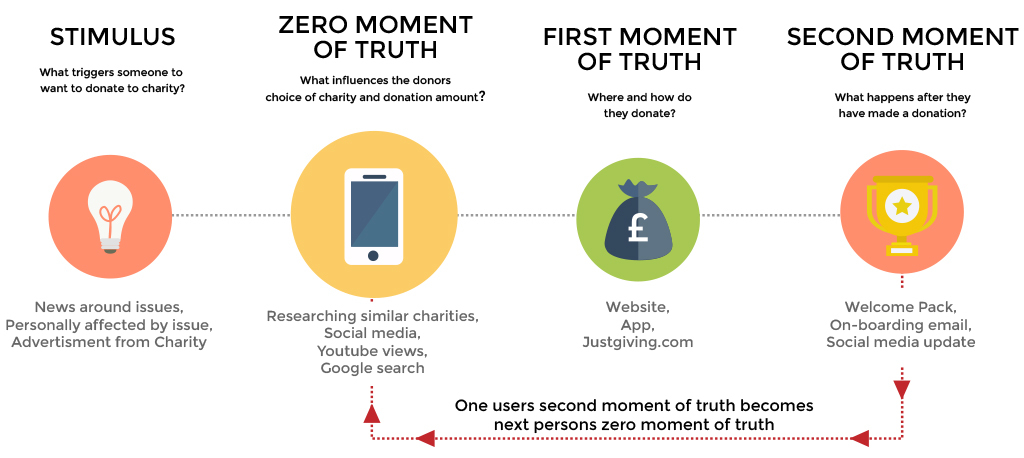
That’s the headline of the ALS Association website – an association that raised over $100 Mn from the Ice Bucket Challenge in less than 4 weeks. Ice bucket challenge is a classic case study of how non-profits can tap on to social media to create a ripple effect. While the ALS Association is one of the several association that benefitted from the challenge, it continues to invest in fund raising. Creating awareness and fundraising are the line items for non-profits. And just like everyone else, non-profits are increasingly adapting technology to drive impact.

The ALS Ice bucket challenge went viral and raised a lot of funds as donations
According to the FEP Report, donor retention rate was 45% and it has been observed that these donors donate more with each year. The rise of social media has motivated young people to contribute more to charity. The donors today are exposed to multiple devices and get information from various channels. Therefore, it is important that non-profits start aligning their campaigns around these donors.

The new mental model: Zero Moment of Truth
Read on to know more about:
Non-profits have problems which are both peculiar and eccentric, and in most cases are really hard to solve.
Some of the major problems that most of these organisations face are:
Non-profits face entrenched fundraising challenges.The existing sources of funds are often not enough to support the organizational activities. This happens because majority of the funds are raised via foundations and are thus restricted. Unrestricted funds are generated from the community which in itself is a bigger challenge.
This FEP Report says that 55% donors in a particular year do not donate in the following year. Due to lack of communication, nonprofits are unable to engage their donors. It is necessary that you inform your donors about the impact that was created due to their contributions.
Any activity that is not directly related to the cause gets a bit hard to perform in the organization. For example, a nonprofit working for Poverty Alleviation might have limited knowledge about using a CRM or any other lead generation tool. Also, the cost attached to hire an expert mostly takes away the opportunity of exploring new horizons.
A great vision doesn’t guarantee that the nonprofit will survive for long. While struggling with finances, it is necessary that the right resources get in place at the right time. That being said, at the end of the day every individual of the organization does sales. It’s important to find the faces that truly represent the value of the organization.
Non-Profit Organizations have a vision and a mission. For example, the vision could be eradicating poverty and hunger from the country, with the mission of taking initiatives for the same for a particular city in next 5 years.
Keeping the vision and mission of the organization in mind, certain goals are set to achieve them. Some common objectives of a nonprofit are:
Considering the problems of non-profits, help from software is required to help them achieve their objectives. Simultaneously, that software must be easy to use and affordable.
Here’s a list of tools (recommended) for non-profits that will help them in creating a powerful digital presence:
WordPress is an open-source and free CMS platform that can be used to build responsive websites. Currently, WordPress powers more than 25% of the web and has a user-friendly interface with predefined themes which can be edited. It features plugins (paid and free) which improves the functionality of the website. The custom domain plan starts at just $2.99 per month.
Besides WordPress, Wix is another CMS platform that has become well known in the past few years. The platform is easy to use and has easy drag and drop interface that simplifies website designing. The custom domain Wix presents the plan in the local currency of the user, so the whole currency conversion process is taken care of. Wix offers more than 500 design templates to chose from and so it takes just a few clicks before one can build his own website.
Trusted by over 40 million users worldwide, Weebly also offers easy drag and drop feature for building a website. Just like WordPress, Weebly has design templates which can be easily edited. Starting at a monthly $8 plan, it offers unlimited storage along with custom domain.
Hosting Solutions offered by GoDaddy, BigRock and BlueHost
According to MailChimp, the average open rate of email marketing campaigns for non-profit industry is 24.98%. An effective email marketing strategy can help nonprofits to raise funds as well as build their volunteer base. MailChimp offers a free plan for up to 2,000 subscribers and 12,000 emails per month. You can design, schedule and send professional emails with MailChimp. You can also use tools like SendGrid, GetResponse.
Pro-Tip: Use personalized email subject lines.
A study of 2.16 million emails conducted by SalesHandy shows that using personalized email subject lines increases your campaign’s open rate by 16%.
PETA has shown how social media can be used to drive community towards the cause. Posting visual content on Facebook ,Twitter and Instagram not only helps in spreading a word but is a faster way to communicate with the audience. A study by Barclays Bank found out that there will be an increase of 72% in online donations via social media.
With web push notifications non-profits can engage with their audience on both desktop and mobile. They can share updates about a new fundraising event, inform the audience about a successful campaign and encourage them to donate for a cause. iZooto has a special offer for nonprofits, flat 25% off and has provided services to Art of Living.

Push Notification by Art of Living
Canva offers a range of pre-designed templates which can be easily edited and converted into strong and empowering posters. Canva has a special offer for non-profits and has offered services to organizations such as Amnesty International.

Infographic on Education in India by TFI
Infographics are a great tool to raise awareness about a cause. They can be easily consumed and understood by the people, and that’s why they hold such significance in any content marketing strategy. With Piktochart, one can choose from a variety of pre-designed templates and start creating rich infographics. Non-profits such as World Wildlife Fund have used Piktochart to create meaningful content.
Videos are one of the most shared content and engaging medium on the web. Creating a good video requires a lot of technical skills, and therefore it becomes difficult for non-profits with limited expertise to create their stories. This is where Rocketium, a video creation tool helps. The Nudge Foundation uses Rocketium to post videos on social media and on display units to raise funds.
Online donations are growing substantially because it saves both time and efforts at the donor’s end. Having a Donate button on each page of the website will allow donors to make a donation, as and when they wish.
Again, it is necessary that the transaction is secured, quick and accepts major online payment processes. Non-profits can choose from the three payment processing options mentioned below:
All of them assure secured checkouts, accept major credit/debit cards for transactions and are user-friendly.
In conclusion, it is important that non-profits have an online presence and engage with the community. Again, since they face problems which are unique in nature, a single tool can not help solve the problems for them. The identification of both the problem and the solution plays a significant role here.